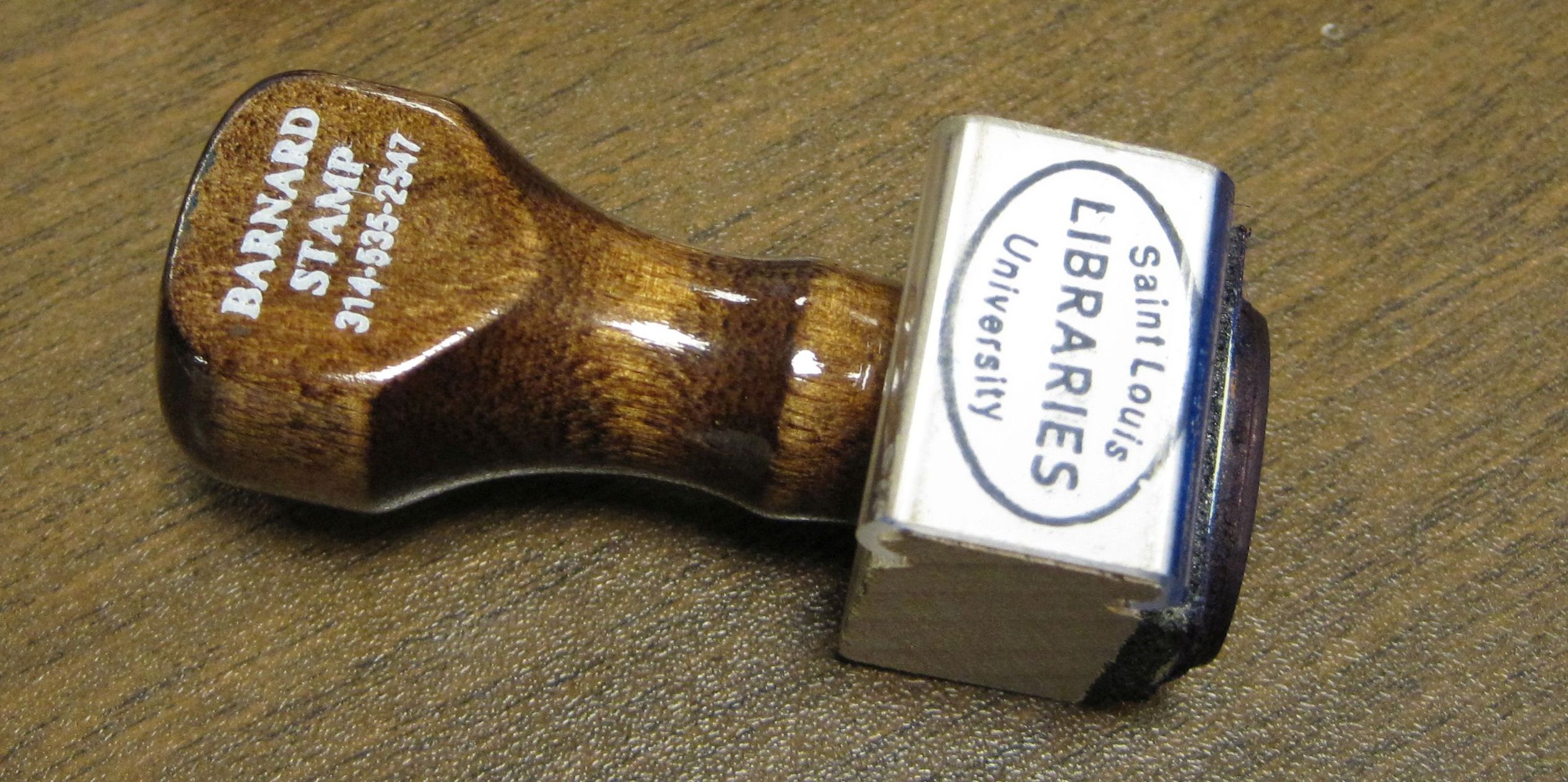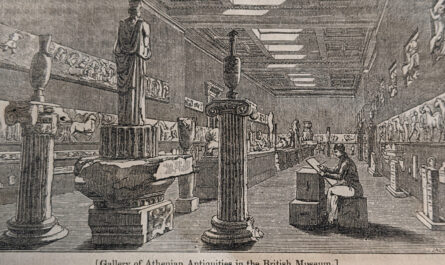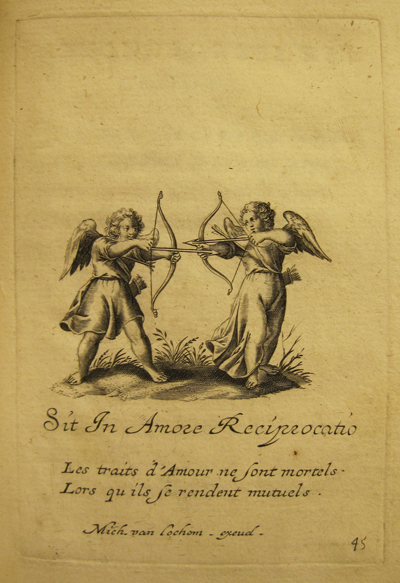One of my regular tasks here at SLU is ownership marking our books for security. This entails applying our newly designed “Saint Louis University Libraries” stamp to title pages and plate versos.

For some, the idea of marking up centuries-old books elicits a knee-jerk, Madam Pince-ian reaction (“Despoiled! Desecrated! Befouled!”), yet marking books has long been standard practice in special collections and is a measure recommended by the Security Committee of the Rare Books and Manuscripts Section of ACRL/ALA to guard against theft. Such basic security procedures are crucial to the balancing act of rare book caretaking, in which providing free and open access to materials is constantly weighed against the need to preserve both individual books and the integrity of collections. Much thought goes into marking tools, from the design and placement of a stamp (which should be legible, but detract from the look of the book as little as possible) to the composition of the ink (which must be permanent, but not deleterious to paper or parchment), and the markings themselves often play a key role in the identification of books stolen from institutional collections.

Ownership marking is vital from a security standpoint, but knowing that I’m helping to safeguard our collection from hypothetical future thieves doesn’t help me to shrug off the instinctive cringe I feel when I press our inked stamp onto a pre-1820 page. What does help is to consider our ownership markings within the broader context of provenance, or the traceable history of hands through which a book has passed. Our books are filled with provenance markings, including the signatures, inscriptions, and bookplates of former owners; stamps proudly blazoning institutional names; and booksellers’ labels discretely pasted in. These are visible traces of the humans who owned, read, or sold a book, and these traces can tell us all sorts of stories.
Here are some of the best stories that our books have told me thus far.
An STL Neighbor

Who hasn’t toured Tower Grove House, the former residence of Henry Shaw, and wondered if the books lining the walls of the formal dining room belonged to Shaw’s own library? Books can give insight into the tastes, preferences, and even the mind of the one who purchased and (presumably) read them, and thus the “authenticity” of the house museum’s library has always seemed of greater importance to me than that of the other furnishings. Well, I may have yet to answer the Great Question of Henry Shaw’s Books (though I’m sure it would be as simple as asking a museum docent), but this bookplate, adhered to the front pastedown of Moeurs des Sauvages Ameriquains, Comparées aux Moeurs des Premiers Temps (1724) tells us that at least one volume from Shaw’s library ended up here at SLU.
A Taste of Bloomsbury in St. Louis

You’ve likely heard of the Bloomsbury Set – the famed friendship group of artists, writers, and other intellectuals who first came together in Bloomsbury, London in the early twentieth century (and who are remembered nearly as much for their tangled web of scandalous relationships as for their minds). Also likely is that you probably wouldn’t expect to find much trace of this tradition-eschewing social circle in SLU’s Catholica- and Jesuitica-heavy Rare Book Collection. Nevertheless, while gathering materials for a March table-top exhibition on the works of Peter Ramus, I found this pictorial bookplate of Giles Lytton Strachey, biographer, critic, and member of the Bloomsbury set. The plate, pasted to the inside cover of a 1584 edition of Ramus’s De Moribus Veterum Gallorum, appears alongside the marks of Roger Senhouse (one of Strachey’s lovers), and Mary Augusta Elton (née Strachey).
A Metaphysical Poet

One of the Rare Book Collection’s claims to fame is the signature of Renaissance poet John Donne on the title page of Codex Canonum Vetus Ecclesiae Romanae (1609). Donne does not appear to have used the book as a notepad for working out his verse (if only the couplet written on the flyleaf were in Donne’s hand!), but the presence of both his autograph and his motto, “Per Rachel ho servito [& non per Lea]” (“I served you for Rachel and not for Leah”), makes it certain that this volume was once part of his personal library.
Institutional History

The most prevalent provenance markings in SLU’s collection are those representing institutional libraries and collections. Among these are retired SLU ownership stamps, bookplates, and other markings from now-consolidated subject libraries and professors’ personal collections. These old markings provide us with an interesting glimpse of SLU history (particularly of its library history).
One such SLU-signed volume, The Republic of Plato, boasts a precursor to our current stamp, and made me feel much more confident about my ownership marking abilities. Rare Books Student Assistant Claire Peterson perhaps best summed up the work of this stamp-happy past library employee when she hypothesized, “Bring your child to work day?”
Physically marking our volumes may still make me cringe, but I love to think that I’m adding SLU’s link to our books’ long chains of provenance, and, in the process, joining the huge cast of characters in the lives of our volumes. Thanks to ownership markings, you never know not only what, but who you’ll find in a rare book.

 by
by 



